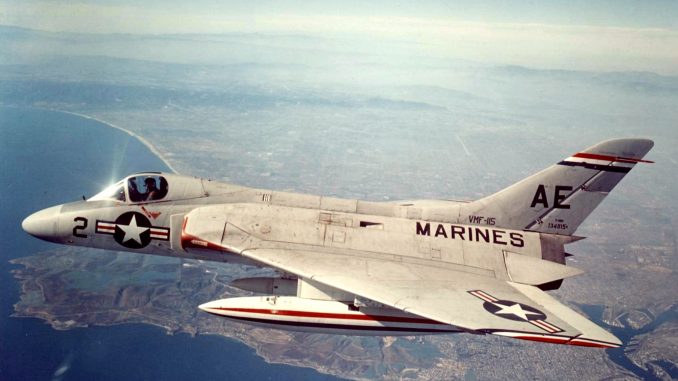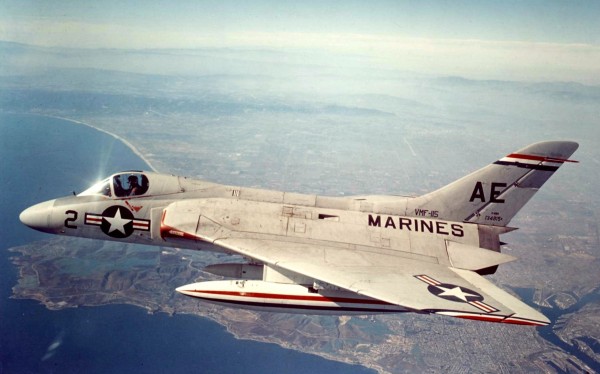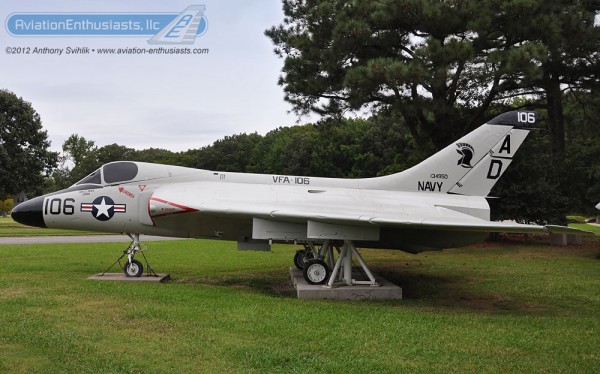

Sixty-three years ago today, the Douglas F4D Skyray took flight for the first time. The F4D was a single-seat all-weather fighter interceptor designed to guard the U.S. fleet against attack by Soviet bombers. The Skyray had a fantastic rate of climb to “scramble” against high-flying bombers and was the first Navy and Marine Corps fighter that could exceed Mach 1 in level flight. The F4D set a speed record for carrier-based aircraft of 753 miles per hour in October of 1953 As part of All Weather Fighter Squadron 3 (VF(AW)-3), the Skyray was the only Navy aircraft to serve in the Air Defense Command. VF(AW)-3 twice won NORAD’s “best performing unit” trophy In addition to a tailhook for landing aboard aircraft carriers, the F4D also had a tailwheel to compensate for its nose-high attitude on landing and takeoff. The aircraft was affectionately known as the “Ford” after the “Four” and “D” of its designation.
The F4D Skyray was a wide delta wing design with long, sharply swept, rounded wings. The design was named for its resemblance to the manta ray.The thick wing roots contained the air intakes feeding a single turbojet engine. Fuel was contained both in the wings and the deep fuselage. Leading edge slats were fitted for increased lift during takeoff and landing, while the trailing edges were mostly elevon control surfaces. Additional pitch trimmers were fitted inboard near the jet exhaust, and were locked upwards on takeoff and landing.
The Westinghouse J40 turbojet was the intended powerplant, but Douglas took a conservative view and designed in contingency options for other power plants. The J40 proved troublesome and was eventually cancelled, and the Skyray was fitted instead with the Pratt & Whitney J57, a more powerful but larger engine.Production aircraft were not delivered until early 1956, while the U.S. Marine Corps received their first in 1957. In total, 419 F4D-1 (later designated F-6 in the unified designation system) aircraft were produced. ( Source Bill Gunston ,Fighters of the Fifties.)
Here is a F4D Skyray (Bureau Number 134950) that is part of the Aviation Heritage Park display at Naval Air Station Oceana.
Visit www.aviation-enthusiasts.com for more aviation and air show memories!



Be the first to comment
Graphic Design, Branding and Aviation Art